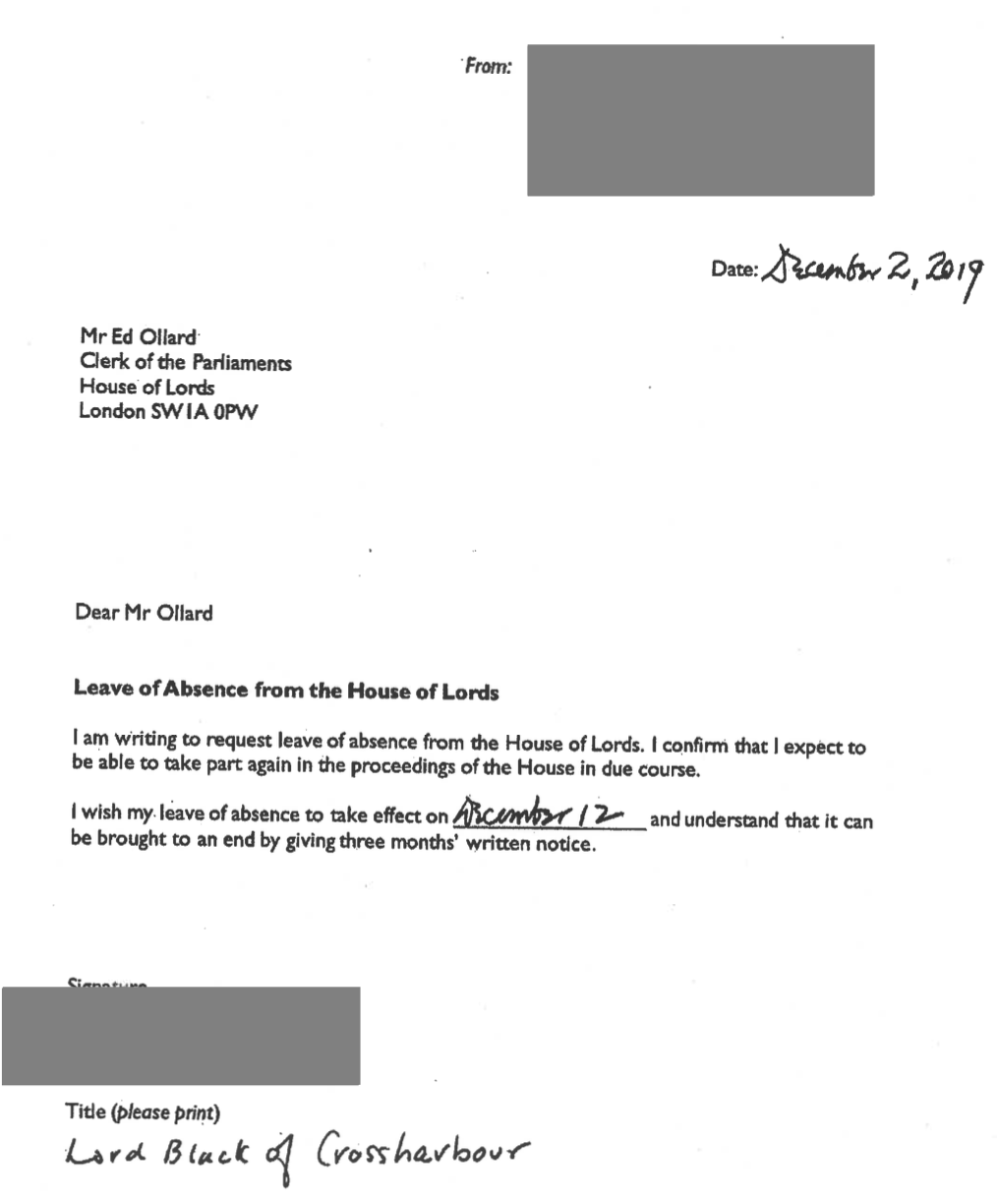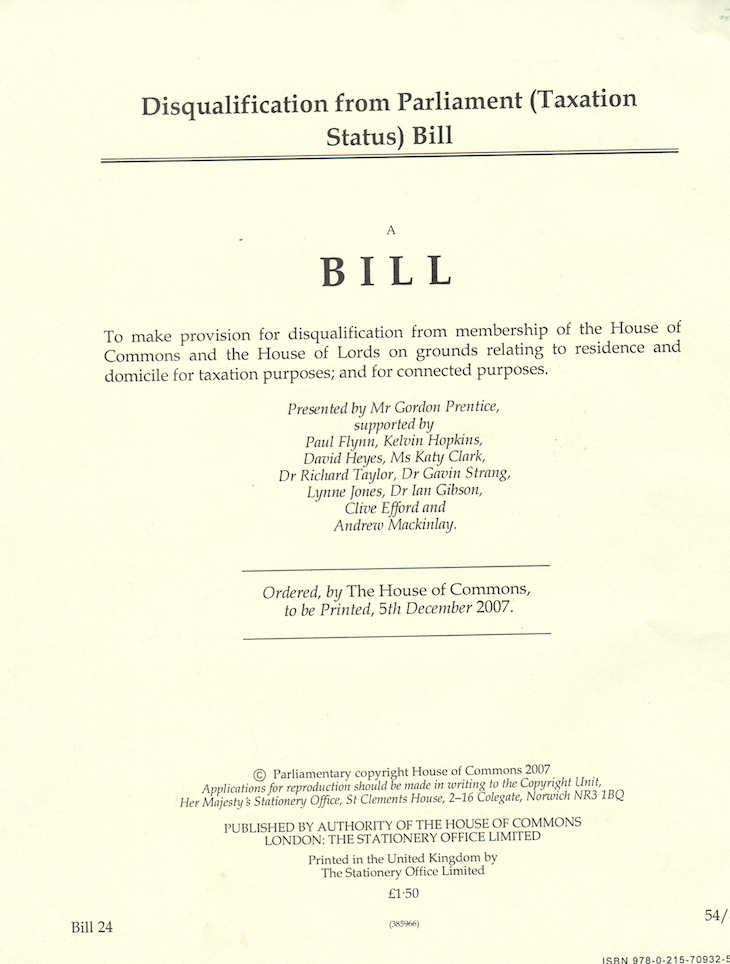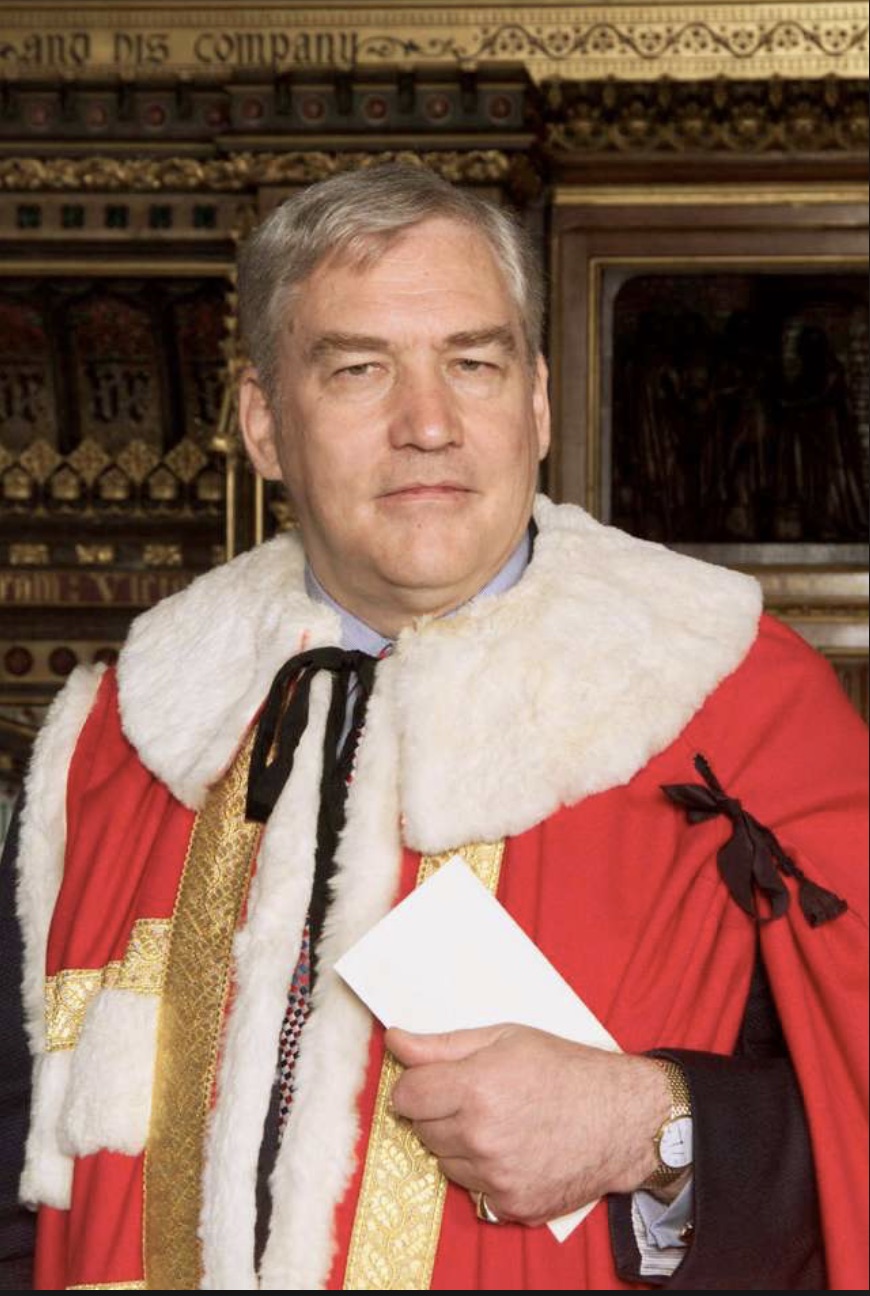- Details
- Written by Gordon Prentice
Did Dr Merillee Fullerton deserve to be re-shuffled out of her job as Ontario’s Minister of Long-Term Care? 
Covid was a catastrophe. But responsibility goes beyond the embattled Fullerton. She was dealt a bad hand.
(Photo right: Rod Phillips - the new Minister for Long Term Care)
By the end of April 2021 when the Covid 19 Long Term Care Commission reported, 11 staff and almost 4,000 residents in Ontario’s long-term care homes had died.
The Commission’s assessment is blunt:
“The Province’s lack of pandemic preparedness and the poor state of the long-term care sector were apparent for many years to policymakers, advocates and anyone else who wished to see. Ontario’s policy makers and leaders failed during those years to take sufficient action, despite repeated calls for reform…”
Fullerton inherited a new ministry spun out of the Ministry of Health in June 2019 just at the time when co-ordination and joined-up thinking was most needed.
Ford’s Deputy Leader and Health Minister, the Teflon-coated Christine Elliott, couldn’t wait to rid herself of responsibility for long term care. She wanted to concentrate on health restructuring where savings and efficiencies, real or imagined, could be made.
Distraction
Elliott’s Newmarket-Aurora riding is in York Region whose retiring Medical Officer of Heath, Dr Karim Kurji, complained last year that the planned health reorganisation was a huge distraction at a time when the Region should have been focussing laser-like on the pandemic.
Fullerton gets the bad press but the person who should be carrying the can is Christine Elliott. Unlike Ford who, as Premier, is still learning on the job, Elliott has been steeped in health policy for decades.
Elliott spent years in opposition as the PC’s Health Critic and when she left Queen’s Park she accepted the offer from Kathleen Wynne of a well-paid job as Patient Ombudsman. But, reading the debates at Queen’s Park, it is clear she was obsessed by inefficiencies (as she saw them) in the Health system.
Cuts in inspections
She figured there were savings to be made – such as the major reduction in the number of inspections in long term care homes. The regulatory assessment produced by the Ford Government viewed these inspections as red tape.
Elliott gave evidence to the Long Term Care Commission on 24 February this year confessing she was unaware that the World Health Organisation (WHO) had been warning in 2019 of a looming pandemic.
James Callaghan, Counsel for the Commission, told her public health experts around the world were forecasting that an influenza pandemic was statistically overdue and
“if the source is not the avian influenza virus currently circulating, which has the potential to evolve into a strain that could cause a pandemic in humans, it will be another as yet unknown virus”.
He asks Elliott:
“I take it, as Minister of Health, you were aware that the World Health Organisation, for example, in 2019 was warning of the possibility of a pandemic and that governments weren’t ready for it. Were you aware of that advice from the World Health Organisation?”
Elliott replies:
“No, I wasn’t.”
I shake my head.
Clueless
Elliott also didn’t think about the masks and medical supplies that would be needed in care homes if and when a pandemic struck. Global supplies would tighten and it would be hard to get protective equipment.
“I wasn't aware of that issue to begin with, so I didn't think about the situation in Ontario.”
Before June 2019 when long term care was hived-off, Elliott was Minister of both Health and Long Term Care. She was asked if she took any steps to ensure that the long-term care facilities under her control actually had the supplies that she, as the Minister responsible for emergency preparedness, would have expected. Elliott replies:
“That was not something that I looked into specifically.”
Clearly, Elliott's focus was not on long term care. Her mind was on other things.
Duplicity comes naturally
So Fullerton is re-shuffled and her replacement is Rod Phillips – the ex-minister who was sacked by Ford for travelling to the luxury island of St Barts during the December holidays when we were all being told to stay at home and avoid unnecessary travel.
The duplicitous Phillips gives the impression he is here in Canada when he is actually relaxing on the beach in the Caribbean.
Welcome to Ontario’s new Minister for Long Term Care.
This email address is being protected from spambots. You need JavaScript enabled to view it.
Ford's re-shuffle: the details
See also the Auditor General's Report on Long Term Care
- Details
- Written by Gordon Prentice
Four people were shot last night in Etobicoke including a one-year-old child, two other children age 5 and 11 and a 23 year old man who had been shot in the legs according to a page 2 report in this morning’s Toronto Star. 
The shooting happened at a child’s first birthday party.
One child was in a life-threatening condition and another in serious condition in hospital. The 1-year-old had been “grazed” by a gun shot.
In the old days this would have been front page news but, tragically, this kind of gun violence has become normalised. Politicians who should be outraged, shrug their shoulders.
I wrote to my own Liberal MP, Newmarket-Aurora’s Tony Van Bynen, on 22 January 2020 asking him to table Parliamentary questions on gun violence. Astonishingly, Canada doesn’t collect statistics on the number of young people under 18 shot and wounded by someone using a handgun nor on the nature of their injuries.
Eighteen months on I am still waiting.
The Liberal Government has, of course, introduced Bill C21 to regulate firearms. But this has been described by Newmarket Mayor, John Taylor, as "highly flawed public policy at best and political downloading at worse".
It could happen here
If the children had been shot and wounded in Newmarket or Aurora rather than Etobicoke Van Bynen would have made a touching and well crafted comment. There would be thoughts and prayers aplenty.
But would he make the case for a handgun ban?
Absolutely not.
On all matters Van Bynen takes his cue from the Prime Minister.
And Trudeau’s inaction on banning handguns is political cowardice. Pure and simple.
This email address is being protected from spambots. You need JavaScript enabled to view it.
Photo above right shows Danielle Kane who was left paralysed below the waist in the Danforth shooting.
Update on 21 June 2021: From the Toronto Star: Neighbourhood reeling after brazen daylighlight shootings
Update on 22 June 2021: From the Toronto Star: Bill C21 - All-in against gun violence
Click Read more and read the correspondence.
Read more: Children shot at party for one-year-old. So what?
- Details
- Written by Gordon Prentice
I do not know if Conrad Black still lives here in Canada – the country whose citizenship he renounced in 2001 and the one which gave him sanctuary after his release from prison in the United States where he had been convicted of fraud. 
However, I know for a fact that Black is a member of the UK Parliament and, as such, is deemed to be resident and domiciled in the UK for tax purposes. Black is currently on leave of absence but the tax rules still apply.
When I recently asked him if he satisfied the requirements for membership of the UK Parliament or if he was there under false pretences he told me:
“Of course I am fully qualified to hold the status I do.”
Guidance
Guidance from Her Majesty’s Revenue and Customs (HMRC) says this:
“Members of the House of Commons (MPs) and House of Lords (Peers) are treated as resident and domiciled in the UK for Income Tax, Inheritance Tax and Capital Gains Tax purposes. This applies to the whole of each tax year in which a person is a member of either House. It applies even if that person is a member for only part of the tax year and regardless of whether or not they are on a leave of absence.” (my underlining)
At the start of a new Parliament, the Clerk of the Parliaments writes to peers on leave of absence to ask whether they wish to retire from the House of Lords or whether they plan to attend again but wish to continue their leave of absence in the new Parliament.
I'll be back says Black
On 2 December 2019, Black told the then Clerk of the Parliaments, Ed Ollard, he expected to be able to take part again in the proceedings of the House in due course and wished to stay on leave of absence.
Tax – and especially international taxation - is notoriously complex but, on the face of it, Black should be a UK taxpayer. 
As it happens, 13 years ago when I was an MP at Westminster, I introduced the Disqualification from Parliament (Taxation Status) Bill which, unfortunately, failed to make progress. The Government, though, endorsed the general principle that UK Members of Parliament should be expected to pay UK taxes and this was subsequently brought into law with the Constitutional Reform and Governance Act 2010.
Part 4 of the Act provides that Members of Parliament and members of the House of Lords (other than Lords Spiritual) are to be deemed to be resident, ordinarily resident and domiciled in the United Kingdom for the purposes of income tax, capital gains tax and inheritance tax. As a result, MPs and Lords are liable to pay these taxes in the UK on their worldwide income.
That seems clear enough.
Home is where the heart is
Although we must tread carefully through the complexities, it seems HMRC will treat you as UK resident if you spend 183 or more days in the UK in the tax year; have a home in the UK, and do not have a home overseas and work full-time in the UK over a period of 365 days.
Of course, it is not quite so cut and dried. There is now a Statutory Residence Test which takes into account the amount of time you spend in the UK and the connections you have with the UK.
Additionally, we learn:
‘Ordinary residence’ is different from ‘residence’. It is not defined in tax law and is based on cases heard by the Courts. If you’re resident in the UK year after year, this would indicate that you normally live here and you’re therefore ‘ordinarily resident’ here.
As a general rule, HMRC regards you as domiciled in the country where you have your permanent home and
“For the purpose of the Statutory Residence Test we consider that a person’s home is a place that a reasonable onlooker with knowledge of the material facts would regard as that person’s home.”
Is Black here? Or is it a hologram?
I’ve been following Conrad Black’s pronouncements and declamations in the National Post and elsewhere ever since he was released from jail in the United States and I've always taken it as a given that the great man was here amongst us, pontificating in Canada.
Who knows? He wants the UK authorities to believe that all along he has been domiciled in the UK, dutifully paying his taxes to the Exchequer. But, then again, perhaps he has been living here and paying UK taxes!
The House of Lords authorities do not require peers to confirm in writing that they are resident, ordinarily resident and domiciled in the UK for tax purposes. They take it on trust. This is engagingly quaint. But it is also a glaring loophole.
Don't ask. Don't tell
The people who do know - the tax authorities – do not comment on the tax affairs of individuals.
The House of Lords won’t ask. And HM Revenue and Customs won’t tell.
Clearly, the UK Parliamentary authorities should ask peers on leave of absence like Black to confirm in writing that they are UK resident, ordinarily resident and domiciled in the UK for tax purposes and that they fulfil the requirements for membership of the UK legislature.
I wouldn’t take anything on trust from someone with a criminal record.
So why should the UK Parliament?
This email address is being protected from spambots. You need JavaScript enabled to view it.

- Details
- Written by Gordon Prentice
Conrad Black has strong views about the taxes we pay here in Canada but is he a Canadian taxpayer himself? 
He should tell us.
Consider this:
Either Lord Black of Crossharbour is UK domiciled for tax purposes - in which case he fulfils a key criterion for membership of the Lords. Being UK domiciled for tax purposes means he pays UK tax on his worldwide income.
Not unreasonably, members of the UK Parliament are expected to pay UK taxes.
Alternatively, he pays tax to the Canada Revenue Agency on his worldwide income in which case he is ineligible for Lords membership.
He cannot have it both ways.
If Black is not paying UK tax he is a lawbreaker and should resign from the Lords immediately.
Leave of Absence
Black took leave of absence from the House of Lords on 5 September 2017.
Importantly, members of the House of Lords – whether they are on leave of absence or not – are deemed to be UK domiciled for tax purposes.
Temporary residence
On his release from prison in the United States in May 2012 Black was given a temporary residence permit by the then Minister of Immigration and Citizenship and now Premier of Alberta, Jason Kenney, allowing him to enter and remain in Canada for one year. He is still here.
Black had renounced his Canadian citizenship in 2001 in order to join the House of Lords. In almost twenty years of membership he made two speeches and had zero impact. His first speech, describing his efforts to get into the Lords, was on 15 May 2002 and his second, on Iraq, was on 28 November 2002.
Privileges of the peerage
Black still has the privileges of the peerage even when on leave of absence. He can dine and use the facilities at Westminster and keep the title. He can sit on the steps of the Throne during debates but he cannot participate or vote. However, he can rejoin by giving three months notice to the Clerk of the Parliaments that he intends to return and become active again.
He says he misses the place and wants to sit in the House of Lords again.
He can.
But only if he pays UK taxes on his worldwide income and zero to the Canada Revenue Agency.

This email address is being protected from spambots. You need JavaScript enabled to view it.
Lord Black lost the Conservative whip in the Lords years ago and is now described as “non-affiliated”.
I have asked his Lordship if he is domiciled in the UK for tax purposes:
Dear Lord Black
I am writing to ask if you satisfy the requirements for membership of the UK Parliament or if you are there under false pretences.
I see from the House of Lords website that you are currently on leave of absence and have been since 5 September 2017.
You will have made it clear to the Clerk of the Parliaments that this leave of absence is temporary and that you are minded to return to the UK at some stage to participate as an active member of the House of Lords.
The Constitutional Reform and Governance Act 2010 provides that members of the House of Commons and House of Lords are deemed resident, ordinarily resident and domiciled in the UK for the purposes of income tax, inheritance tax and capital gains tax.
HM Revenue and Customs makes it clear beyond dispute that this requirement also applies to members of the House of Lords whether or not they are on leave of absence.
Not unreasonably, it is expected that members of the UK Parliament pay UK taxes on their income.
As I see it, you are either UK domiciled for tax purposes - in which case you fulfil a key criterion for membership of the Lords. Or you pay tax to the Canada Revenue Agency on your worldwide income in which case you are ineligible for membership of the House of Lords.
If it is the latter you should resign your membership of the Lords forthwith.
Please let me know if you will do this.
Gordon Prentice
Update at 6.04pm on 20 May 2021: From Lord Black of Crossharbour by email to me: "By what colour of right do you presume to interrogate me?"
Update at 9.23pm on 20 May 2021: From me to Lord Black of Crossharbour: "You did not answer my question. Do you satisfy the requirements for membership of the UK Parliament? This is not a difficult question to answer. A simple yes or no will do."
Update at 9.49pm on 20 May 2021: From Lord Black of Crossharbour to me: "You didn’t answer mine because you have no standing to question me. If memory serves we have been over matters to do with my status as a member of Their Lordships’ House before, and you are belligerent and obnoxious. Of course I am fully qualified to hold the status I do. This is the last time I will give you the undeserved courtesy of a response."
Update at 11.05pm on 20 May 2021: from me to Lord Black of Crossharbour: "You say you are fully qualified to hold the status you do (as a member of the UK Parliament). This means you are UK domiciled for tax purposes and pay UK tax on your worldwide income. UK domicile for tax purposes is a condition of membership of the House of Lords.
Read more: Why Conrad Black must resign from the House of Lords immediately
- Details
- Written by Gordon Prentice
Last September Southlake Regional Medical Centre in Newmarket announced it would be eliminating 97 Registered Nurse positions. The hospital said it was facing a “significant financial challenge’. 
Since then 70 Registered Nurses have received lay-off notices but, mercifully, none has been shown the door.
Getting rid of Registered Nurses is hard to explain in normal times but in the middle of a pandemic it would be next to impossible.
But, make no mistake, the threat of redundancy will still hang over the registered nurses when the Covid threat recedes, as it will.
Superheroes
Yesterday Newmarket-Aurora’s Liberal MP, Tony Van Bynen, marked National Nursing Week by telling the House of Commons that nurses are our “superheroes”.
“Mr. Speaker, some heroes wear capes; others wear masks, face shields, gloves and gowns, but all heroes protect our communities by keeping them safe. Since the start of this pandemic, nurses across Canada have been at the front lines in our battle against this virus. Many have been going to work every day in conditions that could pose a threat to their health, and many have been isolating from their families so they could care for ours.”
He tells MPs nurses are the soul of our health service:
“It is important for us to recognize that nurses are the soul of our health care system and have always been so.”
Except, I suppose, when they are being made redundant.
Courage, commitment, compassion, sacrifice (and out of a job)
Van Bynen thanks them for their courage, commitment, compassion and sacrifices.
But will he do anything to save them from being laid-off at Southlake?
Will he say anything about it?
Van Bynen has a national platform. And as a member of the House of Commons Health Committee he has a thousand opportunities to speak out when Registered Nurses in his own constituency are faced with redundancy.
Instead we get the usual bromides.
Newmarket-Aurora's new Liberal MP has not, so far, expressed a view on the threatened lay-offs. He is content to leave it to Southlake's Chief Executive, Arden Crystal.
Why did I expect anything different?
This email address is being protected from spambots. You need JavaScript enabled to view it.
Update on 14 May 2021: From Newmarket Today: Ontario increasing training spaces to add 2,000 nurses to the health care system. See Ontario Press Release here.
Page 95 of 287